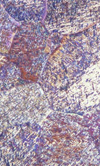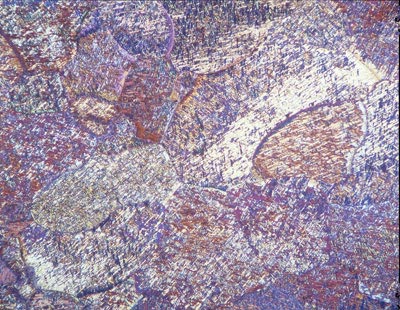Titanium alloys
 My previous article on titanium alloys looked at the possible benefits that Ti10-2-3 - an alloy containing 10% vanadium, 2% iron and 3% aluminium - might offer compared to the widely used Ti6-4 material. Ti10-2-3 has found wide use on military and civilian aircraft, commonly in structures where steel has traditionally been the material of choice. As in motor racing, there is a great advantage to be had in the aerospace industry in terms of mass reduction.
My previous article on titanium alloys looked at the possible benefits that Ti10-2-3 - an alloy containing 10% vanadium, 2% iron and 3% aluminium - might offer compared to the widely used Ti6-4 material. Ti10-2-3 has found wide use on military and civilian aircraft, commonly in structures where steel has traditionally been the material of choice. As in motor racing, there is a great advantage to be had in the aerospace industry in terms of mass reduction.
Since the widespread adoption of Ti10-2-3 on aircraft such as the Boeing 777 for critical structural parts of the landing gear, another alloy has become the preferred option for newer aircraft, owing to a combination of higher strength and lower cost. This alloy, Ti5-5-5-3, which contains 5% aluminium, 5% molybdenum, 5% vanadium and 3% chromium, was also used on the 777, not in critical structural applications but for other systems such as ducting for the wings' leading edge de-icing systems. It is used on the newer 787 and on several other popular aircraft and is suited to structural applications such as major landing gear components.
The primary advantage of Ti5-5-5-3 compared to Ti10-2-3 is the increased strength which, in the case of the ultimate tensile strength (UTS) of billets, is 4% higher than Ti10-2-3 and 27% higher than Ti-6Al-4V. In forged form, the UTS of the Ti5-5-5-3 material is almost 40% greater than Ti-6Al-4V. The comparison in terms of other properties such as fracture toughness and elongation is not so favourable however - Ti5-5-5-3 has 14% lower fracture toughness and 38% lower elongation than Ti-6Al-4V, but compared to Ti10-2-3 it is better in both respects.
Ti5-5-5-3 was developed from the Russian alloy VT22, the composition difference lying in the fact that the 3% chromium in Ti5-5-5-3 replaces the 1% chromium and the 1% iron in VT22.
Although unlikely to present an advantage to the producer of race engine components, Ti5-5-5-3 can be hardened in larger sections than Ti10-2-3 (150 mm compared to 75 mm). A real advantage of Ti5-5-5-3 compared to Ti10-2-3 lies in its heat treatment, where the solution treatment stage is followed by air cooling rather than water quenching. This makes significant distortion of parts less likely.

A compelling advantage of using Ti5-5-5-3 in place of Ti10-2-3 is cost. Despite the fact that 5-5-5-3 offers a range of mechanical advantages, the raw material is less expensive.
Ti5-5-5-3 also has excellent fatigue behaviour. US patent application 2007/0102073 gives it about a 60% advantage compared to Ti6Al-4V in fatigue testing carried out at room temperature and with a stress ratio (min stress divided by max stress) of 0.1, and other sources state that the fatigue strength of cast Ti 5-5-5-3 is better than that of many wrought Ti alloys.
So for which applications might we consider this material?
Con rods are perhaps the obvious one, but the advantage would depend on the amount of material in a conventional Ti6-4 rod that would offer an advantage if replaced. Where a part is designed with stiffness in mind, as in the case of a con rod, replacing the original material with a stronger one doesn't offer much of an advantage, and the modulus of this material is within the range expected of Ti-6Al-4V. The density of Ti5-5-5-3 is 5.4% greater than that of Ti6Al-4V, however, so it might prove difficult to find an advantage in this application.
Cyclically loaded fasteners, which place a premium on high fatigue strength and low stiffness, would be a good application for this material, as well as possibly some valvetrain applications such as spring retainers. Work done previously on titanium gears in which the parts were made from Ti-6Al-4V would benefit from this newer material, with all salient properties such as bearing strength, compressive strength and fatigue strength being significantly improved.
However, compared to Ti6Al-4V, Ti5-5-5-3 is said to be difficult to machine, with cutting speeds possibly reduced by as much as 50%.
Fig. 1 - The microstructure of Ti 5-5-5-3
Written by Wayne Ward